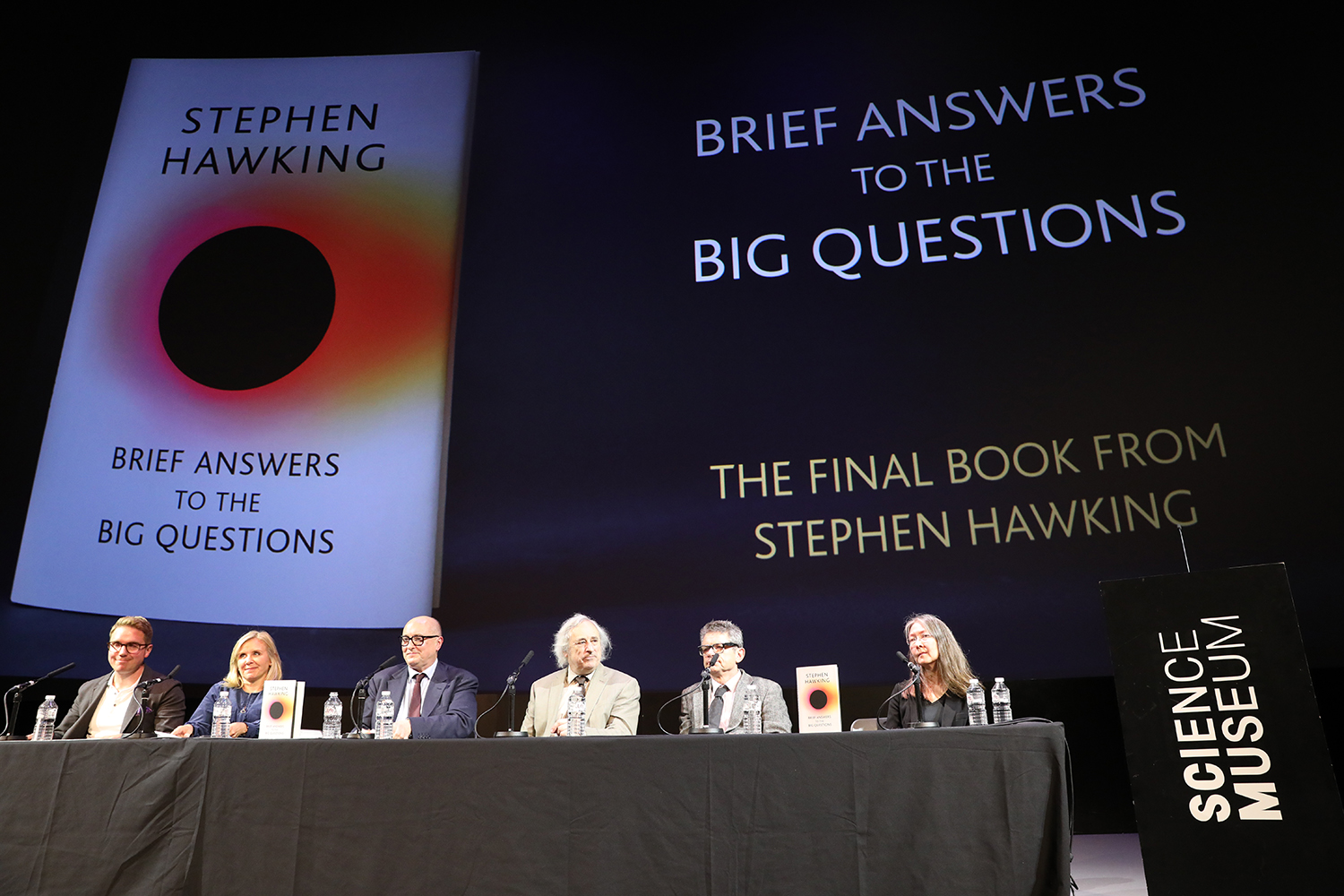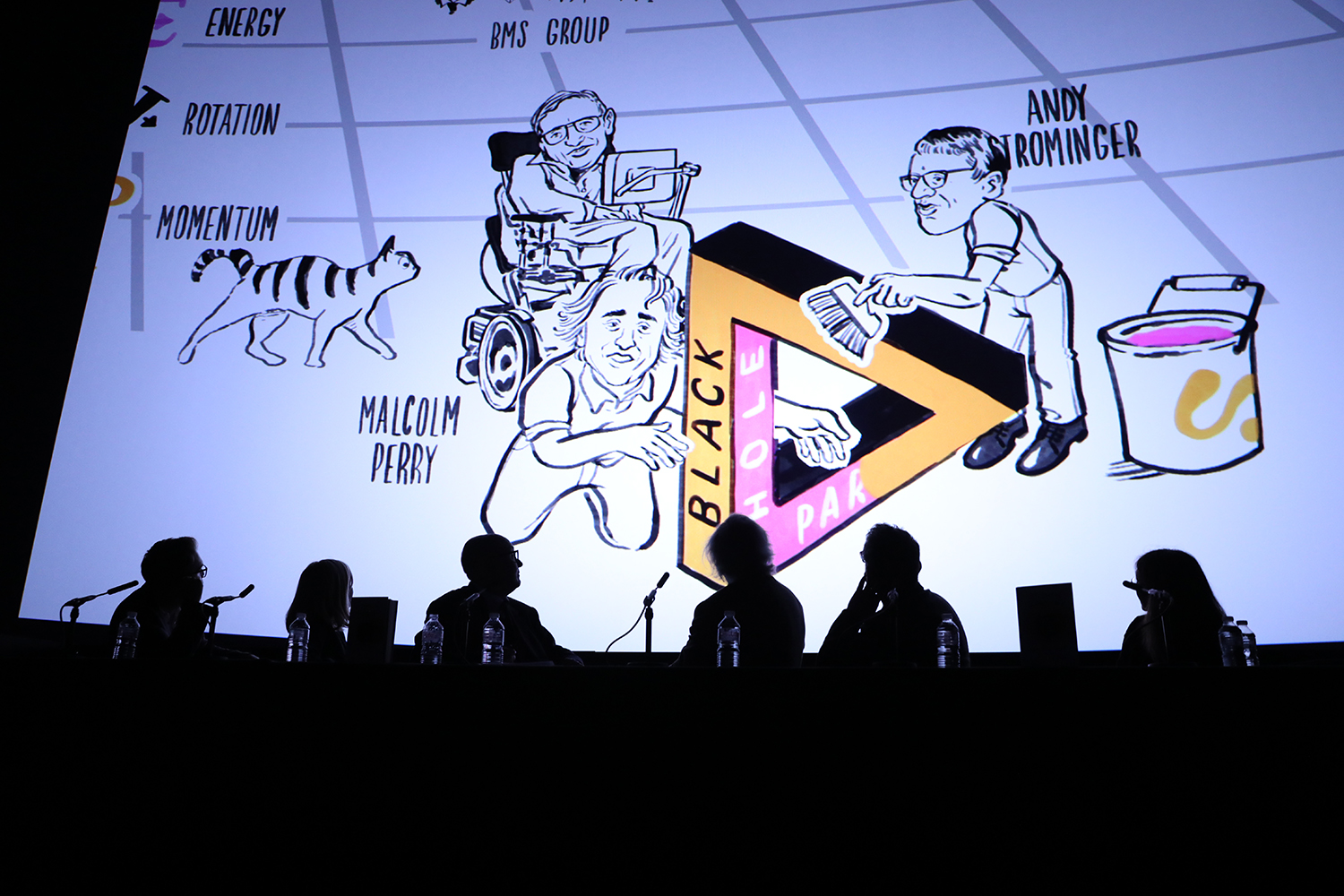Stephen Hawking, who died in March 2018, had been a regular visitor to the Science Museum since the age of eight. In the past, we’ve held an exhibition, celebrations and events in Hawking’s honour and he is also a Fellow of the Science Museum.
Today, we hosted the press conference for his final book, Brief Answers to the Big Questions, published by John Murray.

The event was attended by two of his children, Lucy and Tim Hawking; the co-authors of his final research paper, Professor Malcolm Perry from the Department of Applied Mathematics and Theoretical Physics at the University of Cambridge, Professor Andrew Strominger from Harvard University; Professor Fay Dowker – a one-time student of Professor Hawking, now Professor of Theoretical Physics at Imperial College London; Dame Mary Archer, Chair of the Trustees of the Science Museum Group; and Roger Highfield, Director of External Affairs for the Science Museum Group.
Lucy and Tim Hawking shared memories of their father and discussed his final book and legacy.
The co-authors of Hawking’s final research paper, Professor Malcolm Perry and Professor Andrew Strominger, together with Professor Fay Dowker discussed Hawking’s final research and what it was like to work with Hawking.

The panel watch an animation about Professor Hawking’s work. The press conference ended with a inspiring statement from Professor Hawking, recorded before he died using his voice synthesiser.
Professor Hawking said:
People have always wanted answers to the big questions. Where did we come from? How did the universe begin? Is there anyone out there?
As a boy, I was passionately interested in how things worked. In those days, it was more straightforward to take something apart and figure out the mechanics.
I was not always successful in reassembling toys I had pulled to pieces, but I think I learned more than a boy or girl today would, if he or she tried the same trick on a smartphone.
My life’s work has been to figure out how things work, only the scale has changed. I don’t destroy toy trains any more. Instead, I try to figure out how the universe works, using the laws of physics.
The human mind is an incredible thing. It can conceive of the magnificence of the heavens and the intricacies of the basic components of matter.
Yet for each mind to achieve its full potential, it needs a spark. The spark of enquiry and wonder.
Often that spark comes from a teacher. Allow me to explain.
I wasn’t the easiest person to teach, I was slow to learn to read and my handwriting was untidy. But when I was fourteen my teacher at my school in St Albans, Dikran Tahta, showed me how to harness my energy and encouraged me to think creatively about mathematics. He opened my eyes to maths as the blueprint of the universe itself.
If you look behind every exceptional person there is an exceptional teacher.
However, education and science and technology research are endangered now more than ever before.
Due to the recent global financial crisis and austerity measures, funding is being significantly cut to all areas of science, but in particular the fundamental sciences have been badly affected.
We are also in danger of becoming culturally isolated and insular, and increasingly remote from where progress is being made. With Brexit and Trump now exerting new forces in relation to immigration and the development of education, we are witnessing a global revolt against experts, which includes scientists.
What lies ahead for those who are young now?
I can say with confidence that their future will depend more on science and technology than any previous generation’s has done.
Among the problems I count global warming, finding space and resources for the massive increase in the Earth’s human population, rapid extinction of other species, the need to develop renewable energy sources, the degradation of the oceans, deforestation and epidemic diseases – just to name a few.
There are also the great inventions of the future, which will revolutionise the ways we live, work, eat, communicate and travel. There is such enormous scope for innovation in every area of life.
This is exciting.
We could be mining rare metals on the Moon, establishing a human outpost on Mars and finding cures and treatments for conditions which currently offer no hope.
I don’t believe in boundaries, neither for what we can do in our personal lives nor for what life and intelligence can accomplish in our universe.
We cannot continue to look inwards at ourselves on a small and increasingly polluted and overcrowded planet. Through scientific endeavour and technological innovation, we must look outward to the wider universe, while also striving to fix the problems on Earth.
And one final point – we never really know where the next great scientific discovery will come from, nor who will make it.
Opening up the thrill and wonder of scientific discovery, creating innovative and accessible ways to reach out to the widest young audience possible, greatly increases the chances of finding and inspiring the new Einstein. Wherever she might be.
So remember to look up at the stars and not down at your feet. Try to make sense of what you see and wonder about what makes the universe exist.
Be curious.
And however difficult life may seem, there is always something you can do and succeed at. It matters that you don’t just give up. Unleash your imagination. Shape the future.